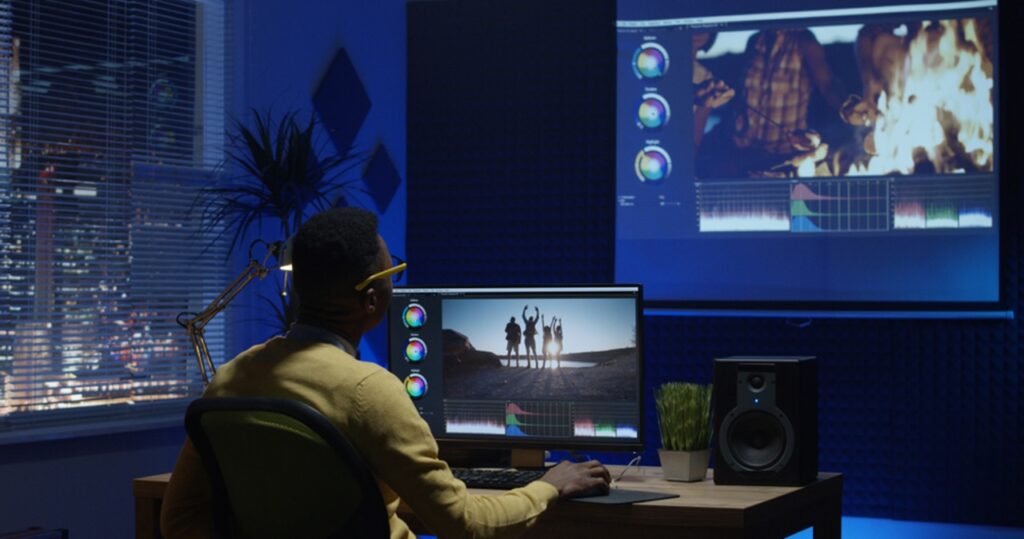The art of film editing is a crucial aspect of filmmaking that can transform raw footage into a cohesive and engaging narrative. Here, we explore the techniques used in the art of film editing and provide examples of how editing can enhance storytelling and emotional impact.
1. Continuity Editing
Continuity editing aims to maintain smooth and seamless transitions between shots to create a sense of realism and flow. Editors use techniques such as match cuts, eyeline matches, and the 180-degree rule to ensure spatial and temporal coherence. For example, in “The Godfather,” continuity editing helps sustain the narrative’s pace and emotional intensity, keeping viewers immersed in the story.
2. Parallel Editing (Cross-cutting)
Parallel editing involves intercutting between two or more scenes that are happening simultaneously but in different locations. This technique builds suspense, creates tension, and highlights thematic connections between storylines. Christopher Nolan’s “Inception” utilizes parallel editing masterfully to weave together multiple layers of reality and dreams, intensifying the film’s mind-bending narrative.
3. Montage
Montage editing compresses time and space through rapid sequences of images or shots to convey information, evoke emotions, or illustrate character development. Sergei Eisenstein’s “Battleship Potemkin” famously employs montage to depict the 1905 Russian Revolution, using rhythmic editing to heighten tension and provoke a visceral response from audiences. This technique showcases the power of editing as a storytelling tool.
4. Jump Cut
A jump cut is a jarring edit that disrupts the continuity of time or space within a scene. It’s often used stylistically to convey a passage of time or emphasize a character’s emotional state. Jean-Luc Godard’s “Breathless” utilizes jump cuts to create a sense of spontaneity and urgency, reflecting the rebellious spirit of the French New Wave movement. The deliberate use of jump cuts adds a distinctive rhythm and energy to the film.
5. Crossfade and Dissolve
Crossfade and dissolve transitions blend one shot into another gradually, creating a sense of continuity or transition between scenes. These transitions are often used to signify changes in time, location, or mood. In “The Shawshank Redemption,” crossfades are employed to symbolize the passage of time and the protagonist’s enduring hope amid adversity, adding emotional depth and resonance to the storytelling.
6. Sound Editing and Mixing
Sound editing and mixing play a crucial role in enhancing the impact of film editing. Editors synchronize sound effects, dialogue, and music with visual cuts to create atmosphere, rhythm, and emotional resonance. Quentin Tarantino’s “Pulp Fiction” exemplifies meticulous sound editing and mixing, using eclectic music choices and immersive soundscapes to complement the film’s nonlinear narrative and dynamic editing style.
7. Long Takes (Continuous Shots)
Long takes involve extended sequences filmed without cuts, showcasing fluid camera movements and immersive storytelling. Directors like Alfred Hitchcock and Alejandro González Iñárritu use long takes to create suspense or capture intense emotional moments. In “Birdman,” director Iñárritu employs long takes to simulate a continuous shot, blurring the line between reality and performance, amplifying the film’s themes of ego, artistry, and identity.
8. Rhythm and Pace
Editing influences the rhythm and pace of a film, determining its overall tempo and emotional impact. Editors manipulate shot length, pacing, and sequence to control the narrative’s momentum and audience engagement. Steven Spielberg’s “Jurassic Park” uses varied editing rhythms—from suspenseful buildup to exhilarating action sequences—to maintain tension and thrill viewers, showcasing how editing shapes viewer experience.
9. Emotional Impact and Narrative Structure
The art of film editing enhances emotional impact by manipulating timing, framing, and juxtaposition of shots. Editors shape characters’ journeys, evoke empathy, and guide audience interpretation through visual storytelling. In “Whiplash,” rapid editing intensifies the protagonist’s psychological turmoil and musical passion, amplifying the film’s themes of ambition, obsession, and artistic perfectionism.
10. Experimental and Avant-garde Editing
Experimental filmmakers push the boundaries of traditional editing techniques, exploring unconventional approaches to structure, rhythm, and visual composition. Films like “Meshes of the Afternoon” by Maya Deren challenge narrative conventions through surreal imagery. And, nonlinear editing, inviting audiences to interpret meaning through symbolic visuals and associative editing techniques.
In conclusion, the art of film editing is a dynamic and essential aspect of cinematic storytelling. And, shaping narratives, evoking emotions, enhancing viewer engagement. Through techniques like continuity editing, montage, and sound mixing, editors collaborate with directors to craft compelling stories that resonate with audiences. As technology and storytelling evolve, editing continues to innovate and redefine the possibilities of visual storytelling, making it a cornerstone of filmmaking artistry.
